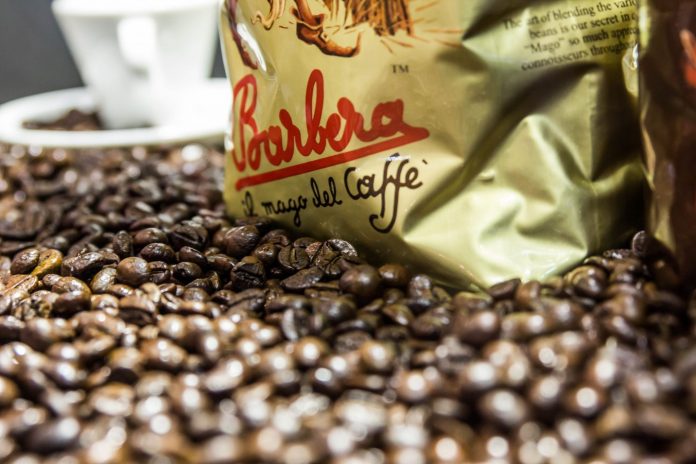The UAE’s coffee market is expected to grow by over 30% in the next four years as the country’s trading hub emerges as a key supply cog in the global coffee supply chain.
With domestic demand continuing an upward surge with over 4,000 tea and coffee houses now operating in the country and 82% of the population saying they consume coffee each day, according to Zagat, the F&B online resource, the UAE is increasingly seen as both a growing consumer and re-export market for coffee beans and refined finished product.
Euromonitor International says the country sits at the centre of a region which now accounts for eight per cent, or US $6.5 billion, of the US $85 billion global consumer spend on coffee – and that this could increase by up to a third by 2030. In 2014, the UAE alone spent $121 million on coffee consumption.
The forecast comes as no surprise to Trixie LohMirmand, Senior Vice President, Exhibitions & Events Management, Dubai World Trade Centre (DWTC), which is witnessing huge space demand from suppliers, traders and roaster and finished product equipment manufacturers at Gulfood. The 21st edition of the world’s largest annual food and hospitality trade show runs February 21-25.
“Coffee is more than just a drink in the Middle East, it is an inherent part of the culture, a leisure pastime and business pre-requisite. Add to this the region’s rising population and the UAE’s anticipated hospitality boom in the run-up to Expo 2020 Dubai and the growth landscape is obvious.
“Other shifting trade patterns are now also coming into the equation with new growers, such as Angola, gaining ground and revitalisation predicted for countries such as Yemen. A scenario for evolving trade development is emerging and we expect to see more signs of it at Gulfood 2016.”
Of the 70 coffee producing countries worldwide, major exporters Brazil, Vietnam, Indonesia, Columbia, Ethiopia, India and Mexico will all be present at Gulfood 2016. In addition to buyer delegations from the world’s two largest traditional importers – the United States and Japan – attending the show, Gulfood will welcome more than 200 specialist coffee manufacturing, trading, roasting and packaging companies from around the world. Coffee sector exhibitors range from the UAE’s Karam and other emerging markets players from the MENA region, South Asia and Africa, to household heavyweights Lavazza and Illycaffé (illy) from Italy.
Coffee though is only one commodity on the receiving end of a bright UAE outlook in the final years of this decade. Global macroeconomic research firm BMI International says the country’s consumer outlook “remains bright” to 2019 even in an environment of lower oil prices.
“Existing high levels of spending, combined with rapid private consumption growth, will create premiumisation opportunities across the food and drink industry, while volume growth will be more limited due to the country’s small population,” says a recent BMI forecast. “We also hold a positive view on the mass grocery retail sector, especially the convenience segment, which will benefit from increasingly time-poor consumers and increasing numbers of women entering the labour force.”
BMI has forecast the UAE’s current 5.7% annual compound growth rate in food consumption will rise to 7.7% by 2019, with total soft drinks sales rising from the current CAGR of 7.5% to 7.7% and mass grocery retail (MGR) sales rising 10.1% CAGR until the onset of the next decade.
BMI says the prospects for the food and drink market in nearby Saudi Arabia are even stronger despite what it determines are “short-term economic headwinds.” Its forecast to 2019 says a number of factors will impact an upward trend in the Kingdom. “Sales will continue to benefit from rising disposable incomes, favourable demographics, increasing urbanisation and ongoing formalisation of the mass grocery retail sector,” it says.
BMI says Saudi Arabia will lead the way in a regional MGR upswing with year-on-year total food consumption growth of 7.3% CAGR until 2019. Per capita food consumption growth in the Kingdom will rise from the current CAGR of 4.6% to 5.4% to 2019, while the value of total soft drinks sales will reach 6.9% CAGR growth to 2019 and MGR sales will climb 8.9% CAGR to the same period.
“All analyst indicators point to considerable business opportunities for the sector across the retail and hospitality sectors with both undergoing sizeable growth and modernisation,” explained LohMirmand. “Convenience retailing is now being pursued more aggressively within the retail segment while the regional hospitality sector continues growth strategies linked with expanding national and regional tourism ambitions.”
It’s against the bullish national and regional cross-sector background that DWTC anticipates this year’s Gulfood will attract 85,000-plus visitors from more than 170 countries, including international heads of state, ministers, government officials and national trade associations from five continents.
Gulfood 2016 is a strictly trade-only event for business and trade visitors. The show is open 11am-7pm from February 21-24 and 11am-5pm on February 25. Visitors can pre-register at www.gulfood.com to save AED100 (US$ 27) on the AED300 (US$ 81.70) on-site entry fee.

